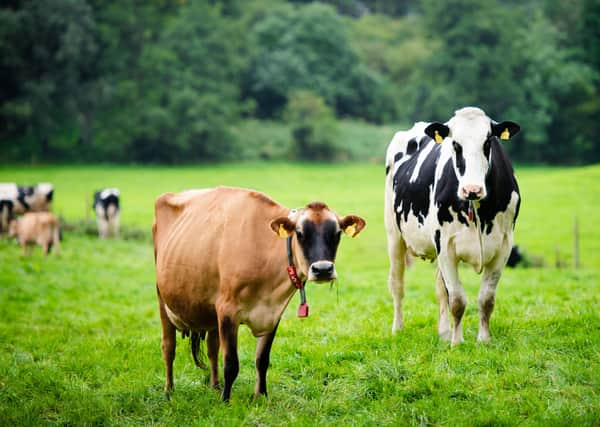Maximising lifetime daily yield with HealthyLife


To feed the ever-growing population and to maximise profitability of dairy farms, the full production potential of each dairy cow must be met.
If we are to make dairy farming more sustainable, longevity of dairy cows should be maximised. The key to improving longevity is to build more resilient, healthier cows so they stay in the herd for longer. At present, the global average number of lactations is only 3.16. Here in Ireland, our average number of lactations is a little lower at just 3.0. Research has shown that 5.0 lactations should be the target as this optimises cow efficiency.
Advertisement
Advertisement
If we can improve longevity of dairy cows, we should see an increase in lifetime daily yield (LDY), which is the total volume of milk produced by the cow over her lifetime, divided by the number of days of life. Research from Germany has shown that if LDY is 14 kg/day, the farm is likely to be profitable.


There are four main areas which affect LDY and can be manipulated on-farm to maximise dairy cow performance.
1. Age at first calving
The optimal age at first calving is 22 months. Reducing age at first calving, while importantly still reaching heifer rearing targets will help to improve LDY. A study carried out at the Ruminant Research Centre demonstrated that heifers calving between 22 and 24 months have better fertility and reach higher peak milk yields in first lactation. Additionally, it showed us how increasing the age at first calving to 28 months can result in a 2kg/day reduction in LDY.
2. Production per lactation
Resilient dairy cows have less day-to-day variation in milk yield and a slower decline in their lactation curve. As a result, these cows reach peak production between 50 and 70 days. Nutrition is key as to enhance peak yields, the diet must be well balanced, supplying all the nutrients the cow needs to produce milk, yet still include adequate fibre levels to promote rumen health. If feeding management is optimum with good feed access, the cow should eat around 12 meals per day therefore, cows should have free access to feed and fresh water at all times.
3. Calving interval
Advertisement
Advertisement
Traditionally, the target calving interval is 365 days or less. However, in highly productive herds, cows tend to be in a strong negative energy balance after calving, so it may be more difficult to achieve fertility targets in these cases. Careful monitoring of BCS and regular assessment of dietary energy levels to minimise BCS loss can help to keep the impact of negative energy balance at a minimum.
4. Number of productive years
Typically, the dairy cow reaches peak production between lactations 3 and 4, therefore we should aim to increase our average number of lactations, so cows survive in the herd past the fourth lactation. Generally, cows begin to make profit after 2.5 lactations. A good target to work towards would be 4 to 5 lactations.
Summary
HealthyLife outlines how health and nutrition are closely linked. If the dairy cow’s nutrition is well managed, her health status will be improved, and she will be more likely to remain in the herd. The programme offers a range of products and nutritional management advice covering areas such as gut health, energy balance and metabolic diseases. HealthyLife helps you to improve the health and welfare of dairy cows, resulting in a smooth journey from transition throughout lactation. This will be discussed in more detail in upcoming articles.